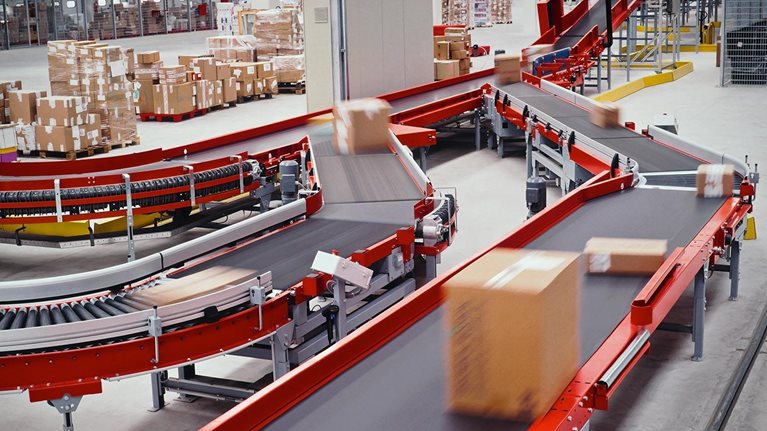Big data and advanced analytics. The two go together: the enormous quantities of data that sophisticated technologies now produce aren’t much use without equally sophisticated analytic techniques to find the nuggets worth acting on. But they are not equals in the media, where big data gets the headline even when the discussion is really about analytics.
And even in the business press, much of the commentary centers on aspects that the public can understand most easily, especially the use (and potential misuse) of consumer data for marketing purposes. Overlooked is one of the greatest potential sources of value from advanced analytic techniques: better understanding of and control over companies’ own operations.
To get a clearer picture of what analytics can now achieve and how it might evolve, we spoke with Thomas Froese, the managing director and cofounder of atlan-tec Systems. Founded in 1989, atlan-tec has been engaged in data analytics and modeling since 1994, with an emphasis on industrial applications. Froese spoke with us from his office in Willich, Germany.
McKinsey: The phrase “advanced analytics” has become something of a buzzword in many sectors, but there’s often uncertainty about what it really means. How should businesspeople understand the concept today?
Thomas Froese: At its heart, advanced analytics is the application of digital technologies to mathematical models that help solve complex problems. But that tells only a very small part of the story. I believe that some of the greatest potential arises in production environments, which can be anything from an iron mine or chemical plant to a commercial-lending business or a high-energy physics laboratory.
The specific processes involved in these cases may be very different, but they all tend to raise problems that involve large numbers of variables interacting in nonlinear ways. An example we have seen—one that is very timely in light of resource limitations—concerns optimizing energy use for a factory running many different processes and using many different power sources.
McKinsey: With the changes in technology over the past couple of decades, how has advanced analytics changed?
Thomas Froese: Technology is actually only one of the reasons that the field is evolving so quickly. We’ve learned how to optimize and simplify some of the core algorithms we use so that they run more quickly and can be used more easily. Advances in artificial intelligence, particularly in fields such as machine learning, mean that we can automate more of the model-development work. Neural networks, for example, link mathematical functions together in a structure that approximates how the brain learns. Genetic algorithms mimic the process of natural selection by weeding out less-accurate combinations of variables until only the “fittest” version remains.
It’s the combination of all of these forces that is really changing advanced analytics. A multidimensional, nonlinear model that in the 1990s would take an engineer six weeks to build now takes four minutes.
McKinsey: What misconceptions do people have about advanced analytics?
Thomas Froese: The most important misconception we see is a fundamental one: few organizations can envision what this modeling power could do for them. Most people are not used to thinking about complex, multidimensional problems, and helping them develop that understanding takes time and effort.
McKinsey: What are the types of questions that organizations should start thinking about?
Thomas Froese: A good starting point is to look for variability, especially variability that results from the interaction of many different factors.
The cost per ton of a factory’s output may fluctuate enormously. That naturally raises questions: What are the reasons for the variation? Can we find their sources? How could we limit their impact? That’s when advanced analytics can help, especially in sorting through hundreds—or even thousands—of variables, ranging from the cost of each individual input to the timing of maintenance interventions.
McKinsey: What types of problems can the latest tools and techniques help organizations finally solve?
Thomas Froese: The energy-management problem I mentioned earlier was one of the most challenging recent examples. We were working at a chemical facility that was paying several different rates for external power supplies, plus it had its own boilers, gas turbines, and steam turbines operating at various pressure levels. Consumption of both steam and electrical power was highly unpredictable, varying about 95 percent. Our task was to find the optimal combination of energy sources for every operating situation.
Conventional linear programming cannot adequately model and manage the interdependencies of these variables, so it gave only a partial, linear solution. A combination of neural networks and a genetic algorithm reduced costs by an additional five percent—which, in a mature and fiercely competitive industry such as chemicals, is a significant competitive advantage.
McKinsey: That’s a powerful result. Why aren’t more companies using advanced analytics?
Thomas Froese: In practice, I see two different extremes. One extreme is the company with very little knowledge about analytics. In that case, we have a lot of work to do to help them understand why building models of their processes is important—how it is increasingly crucial for their competitive position. This extreme is typical at younger companies, especially in emerging markets that had less access to analytic capabilities in the past.
At the opposite extreme are companies with a very high level of knowledge. They are even harder to reach because they believe they already know everything about modeling and cannot improve further—even when we explain that their current practices, such as building classical models for all of their processes, will take too much money and time to be worthwhile.
We see this pattern more often in more mature economies and industries, where companies have been engaged in process analysis for decades or even centuries. Changing anything means aligning many, many more people; sometimes it feels as though the cleaning team gets a say on whether advanced analytics is a good idea!
McKinsey: So it’s the human dimension that is the real barrier?
Thomas Froese: Yes. We have to remember that it’s people who use data analytics, so we need to help the people change as well. That is more difficult. We can automate mathematics, we can automate design decisions, but we cannot automate changes in human behavior.
McKinsey: What do you think is the real source of the resistance?
Thomas Froese: I think fear of losing control is the biggest obstacle. Leaders and managers must prepare themselves to question all of their old procedures and understand that in the future, human beings will hand over many more tasks to artificial intelligence.
And we need to understand that most people are afraid of new technologies—they’re afraid of losing their jobs. But for any organization to ignore advanced analytics is dangerous, because at least some of its competitors won’t. As a result, the organization may disappear, taking all of its jobs with it.
McKinsey: What steps can organizations take to become more open to advanced analytics?
Thomas Froese: At minimum, we must confront these issues openly and educate. But the ideal solution is a major restructuring that breaks old networks and allows new ones to form. Here in Germany, there are a few examples of radical decentralization that dissolved old functional units and freed businesses to find new sources for internal analysis. In my opinion, that is probably the only option for some incumbents that are highly resistant to new ideas.
McKinsey: How feasible is it for organizations to develop their own advanced-analytics capabilities?
Thomas Froese: Possible, but it takes a big investment. For example, I would estimate that at atlan-tec, we have spent about 100 man-years in developing our own techniques.
It can be risky. I know of industrial companies that have spent more than a decade trying to develop their own solutions without achieving any result that they can use.
McKinsey: What does it take internally for a company to use advanced analytics effectively?
Thomas Froese: The biggest requirement in projects like this is alignment, such as between the people who are managing an industrial facility’s control system and the people who are managing quality assurance. You have to bring them together—along with their data—so that they can clearly separate causes from effects and agree on what they are measuring.
A seemingly simple action, such as determining exactly when to insert a probe into a process to take measurements, can have enormous impact on the quality of the data and the resulting analysis. Quality assurance personnel usually don’t think about the precise timing of when they insert their probes because it isn’t meaningful for what they are measuring. But when the organization is trying to find deviations and match them to changes in other variables, timing really matters.
McKinsey: And it reinforces how vital the human component is.
Thomas Froese: Yes, that’s right. I’d say that for any project, we start with a serious analytic effort in preparing the data, making the models, and finishing the technical solutions. But as we’re working we start to think about the next phase, which focuses on people. It takes a lot of time to train people, to help them start following the right behaviors and stop activities that do not support the operational strategy. That can take up to 70 or 75 percent of the total time a project needs.
McKinsey: But once you get there, the impact can be huge.
Thomas Froese: An organization can earn its entire return on investment in two months. That was the case at one petrochemical plant, whose output rose by 8 percent while costs remained unchanged, and the life span of certain catalysts was extended by 30 percent.
It might have been possible for the company to use multivariate statistics instead. But that would have required the company to shut the plant down for testing, an expensive proposition because it disturbs normal operations for weeks—and it can introduce new variables that undermine data quality.
McKinsey: What are the next horizons for advanced analytics?
Thomas Froese: Well, you are asking the chairman of the German standardization committee for big data, so I am afraid my answer is not completely objective. But my vision is for advanced analytics to become as easy as driving a car, where anyone can start the ignition and drive even if they have very little idea of what is happening in the engine. That’s the goal: press a button and get a fully automated solution.
In my view, a basic truth in all areas of technology is that methods prevail only if they are transparent, comprehensible, and widely available. In short, they are standardized. In advanced analytics, we are creating standard work flows that work almost like recipes. The more steps we can bring into standard work flows, the more automated an entire procedure can become.
Ultimately, making advanced analytics more accessible and widespread should make it seem more familiar. Rather than a threat, it can become a new skill that many people can learn. For that reason, we want to involve a broad spectrum of leaders in establishing standards.
McKinsey: And in the future, once this standardization takes hold, what is atlan-tec’s role?
Thomas Froese: In my vision, the standards become a platform that serves as a central collection of advanced-analytics knowledge. Our role will be to distribute that knowledge to other organizations, to help them adapt it and make it more efficient.
McKinsey: Over your 25 years of experience, what would you say are the most enduring lessons about advanced analytics?
Thomas Froese: Our most important work is to make the application of advanced analytics more and more transparent, so that people no longer need programmers and mathematicians to use it. We have to develop understandable standards, communicate them clearly, and push the technology until it is easy to use. The real breakthroughs will come once advanced analytics is easily accessible to all.



